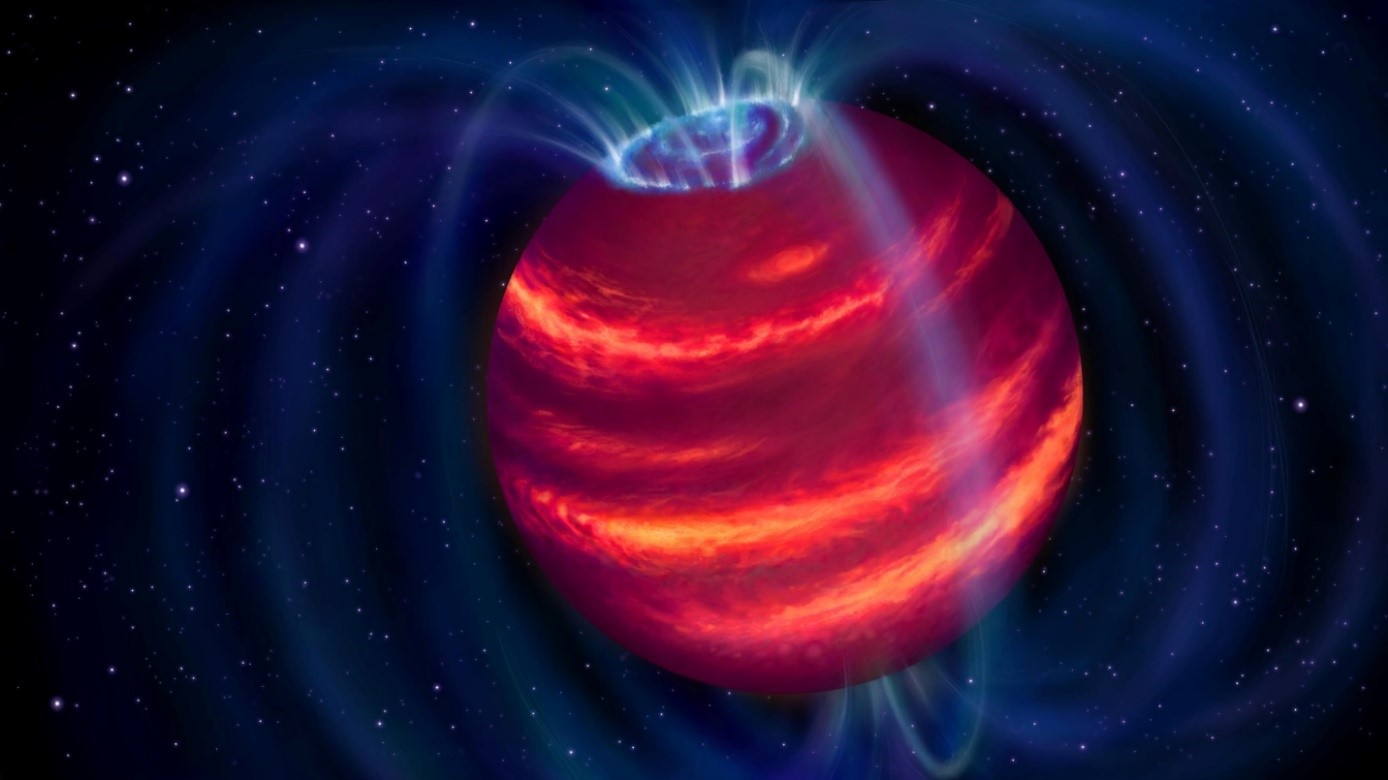First direct detection of a brown dwarf with a radio telescope
Astronomers at ASTRON, led by UG researcher Harish Vedantham, have used the LOFAR radio telescope to discover a “brown dwarf” – a faint object more massive than Jupiter, but significantly less massive than the Sun. The discovery of the object dubbed Elegast, opens up a new path that uses radio telescopes to discover faint objects that are close-cousins of Jupiter-like exoplanets. Their research was published in Astrophysical Journal Letters on 9 November 2020.
Radio waves emitted by brown dwarfs carry information about their magnetic field strength. Until now radio observations could only measure strong magnetic fields – about a hundred times the strength of a common fridge magnet. LOFAR’s low frequency of observation makes it sensitive to magnetic fields comparable to that of a fridge magnet, which is within the range postulated to exist on the coldest brown dwarfs and large exoplanets.
“Magnetic fields control the atmospheric properties and radiation environment around exoplanets and radio observations are our best hope of measuring them. With this discovery, we have taken an important step towards realising the promise of radio astronomy to exoplanet science,” said Dr. Harish Vedantham, ASTRON staff scientist and lead author of the study published today in the Astrophysical Journal Letters.

New discovery technique
The group used a new discovery technique to spot Elegast. Previously, astronomers pointed radio telescopes at known and catalogued brown dwarfs that were all found from their faint glow at infrared wavelengths. “With LOFAR, we want to go down the mass-ladder all the way to Jupiter-like planets that are too faint to have been found in existing infrared surveys, so we decided to search for these objects directly in our radio images,” said Dr. Joe Callingham, a VENI postdoctoral fellow at Leiden Observatory and co-author of the study.
Polarized radio images
Objects such as Elegast (and exoplanets) stand out in special “polarized” radio images because the electric field of the radio waves they emit rotates in a characteristic circular pattern as it propagates – a phenomenon called circular polarisation. “We could not have picked out Elegast in our standard radio images from among the crowd of millions of galaxies, but Elegast immediately stood out when we made circularly polarised images,” said Dr. Tim Shimwell, ASTRON staff and project scientist of the LOFAR survey that led to Elegast’s discovery. The group then used infrared follow-up observations from the Gemini telescope and NASA’s Infrared Telescope Facility to confirm that Elegast was indeed a cold brown dwarf.
Elegast is the first object of its kind that has been directly identified in radio images. The group is now busy acquiring follow-up observations of Elegast to measure its magnetic field and compare the results with theory. They are also busy sifting through LOFAR data to identify more objects like Elegast.
Vital datapoint
“Our ultimate goal is to understand magnetism in exoplanets and how it impacts their ability to host life. Because magnetic phenomena of cold brown dwarfs like Elegast are so similar to what is seen on solar system planets, we expect our work to provide a vital datapoint to test theoretical models that predict the magnetic fields of extrasolar bodies,” said Vedantham.
More news
-
15 September 2025
Successful visit to the UG by Rector of Institut Teknologi Bandung
